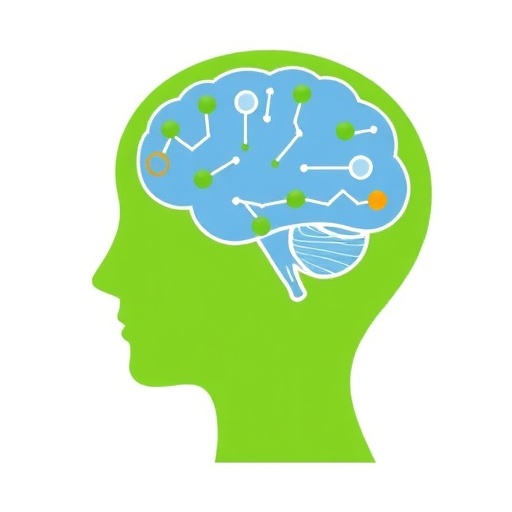In recent years, the complexity of medical information has become a significant barrier to patient understanding and self-management of their health. With healthcare systems becoming increasingly intricate, the gap in health literacy among patients has widened. A groundbreaking study conducted by Riemenschneider, Rettich, Hoffmann, et al. investigates this crucial issue by evaluating the impact of easy-to-understand patient letters provided to individuals post-discharge. The study elucidates the effect these letters have on enhancing the patient’s health literacy, thereby empowering them to engage more effectively in their healthcare process.
Effective communication is paramount in healthcare, especially when patients transition from hospital care to self-management at home. Discharge instructions, typically laden with medical jargon and complex terminologies, often leave patients feeling confused and anxious. The prevalence of misunderstandings in this phase can lead to poor health outcomes, increased readmission rates, and ultimately, heightened healthcare costs. By examining the ramifications of simplified communication, the researchers aim to bridge this gap between clinical knowledge and patient comprehension.
The randomized controlled study incorporates a significant sample size, demonstrating its robustness and validity. Participants were divided into two groups: one receiving traditional discharge instructions, while the other was presented with a simplified version, designed to enhance readability and comprehension. This meticulous approach allows researchers to clearly delineate the differences in health literacy levels between the two cohorts, providing conclusive evidence regarding the efficacy of the intervention.
One of the primary outcomes measured was the patients’ ability to understand their health conditions and follow post-discharge instructions. The study utilized a variety of tools and metrics to assess comprehension, evaluating both qualitative and quantitative improvements. As healthcare providers grapple with the rising demands of patient education, this study suggests that simplifying communication can significantly benefit patients, enabling them to take charge of their health decisions.
Interestingly, the ramifications of improved health literacy extend beyond mere understanding. The study found that patients who received the simplified letters reported decreased levels of anxiety related to their health management. This finding underscores the psychological dimension of health literacy, highlighting that when patients comprehend their health information, they feel more in control and less overwhelmed. This psychological shift can contribute to better adherence to prescribed regimens and ultimately improve health outcomes.
Moreover, the implications for healthcare providers are profound. Empowering patients through clear communication not only nurtures a trusting relationship between provider and patient but also optimizes the efficiency of the healthcare system as a whole. When patients comprehend their health statuses and the actions they need to take, they are likely to utilize healthcare resources more effectively, potentially alleviating some barriers that lead to healthcare system strain.
The research team also delves into the implications of these findings on public health initiatives. As health literacy remains a critical area for enhancement, particularly in diverse populations, the potential for standardized easy-to-understand patient communications could pave the way for more equitable health outcomes. By acknowledging the diversity of patient backgrounds and literacy levels, healthcare stakeholders can implement strategies that are inclusive and effective for all.
Another significant aspect of this study is its call for a paradigm shift in the way medical professionals approach patient education. In traditional settings, a one-size-fits-all model often prevails, with insufficient attention paid to the individual needs of patients. The findings from Riemenschneider et al.’s study suggest that a tailored approach, where communications are adapted to meet the patient’s literacy level, might yield significant benefits. This can involve training healthcare providers on effective communication strategies, stressing the importance of empathy and clarity in discussions with patients.
The integration of technology in enhancing patient communication also warrants discussion. The rise of digital health tools offers new avenues for delivering information in an accessible format. Mobile applications and online platforms can facilitate the dissemination of patient-friendly resources. These tools can serve as extensions of the simplified letters, potentially reinforcing messages in a visual manner that further aids comprehension.
As the demand for improved health literacy continues to grow, there is a pressing need for ongoing research in this area. The findings from this study serve as a cornerstone for future investigations into effective communication practices across an array of healthcare settings. As healthcare evolves, embracing innovations that support patient understanding will be instrumental in fostering an environment where patients are both informed and empowered.
The overall conclusion drawn from the study is clear: patient letters that are easy to understand can significantly enhance health literacy, ultimately leading to better patient outcomes. This transformative concept has the potential to reshape how healthcare providers communicate with patients, making healthcare more patient-centered and responsive to individual needs.
In light of these compelling findings, it is crucial for healthcare systems to adopt a more holistic approach that incorporates effective communication as a fundamental component of patient care. Fostering an environment where patients can easily access and understand their health information may very well be the key to advancing public health and improving the quality of care.
As the healthcare landscape continues to evolve, the research conducted by Riemenschneider and colleagues emphasises the necessity of bridging the communication gap that often hinders patient engagement. By prioritizing health literacy, the healthcare community can ensure that patients are not only passive recipients of care but active participants in their health journey.
Moving forward, it will be critical for policymakers, healthcare providers, and researchers to collaborate in implementing strategies that prioritize health literacy. This collaborative effort can lead to the development of more comprehensible patient communication tools and enrich the overall patient experience. The impact of such initiatives on individual patients and the healthcare system at large could be transformative, paving the way for a future where health literacy is no longer a barrier but a driving force for health empowerment.
In conclusion, the substantial insights gleaned from the study underscore the importance of effective communication in the healthcare sector. By striving to provide patients with clear, concise, and culturally appropriate information, healthcare providers can enhance the overall quality of care and potentially reduce healthcare disparities. As this area of inquiry evolves, continued focus on patient understanding will be essential for fostering better health outcomes and ensuring that every patient is equipped with the knowledge they need to manage their health effectively.
Subject of Research: Impact of easy-to-understand patient letters post-discharge on health literacy.
Article Title: Evaluating the impact of easy-to-understand patient letters after discharge on patients’ health literacy: a randomized controlled study.
Article References:
Riemenschneider, H., Rettich, A., Hoffmann, H. et al. Evaluating the impact of easy-to-understand patient letters after discharge on patients’ health literacy: a randomized controlled study.
BMC Health Serv Res 25, 1366 (2025). https://doi.org/10.1186/s12913-025-13464-4
Image Credits: AI Generated
DOI:
Keywords: Health literacy, patient communication, discharge instructions, randomized controlled study, healthcare outcomes.
Tags: bridging clinical knowledge gapsdischarge instructions simplificationeffective healthcare communicationempowering patients in healthcareenhancing patient understandinghealth literacy intervention studyhealthcare transition challengesimpact of patient lettersimproving patient self-managementmedical jargon reductionpatient health literacyrandomized controlled trial in healthcare





